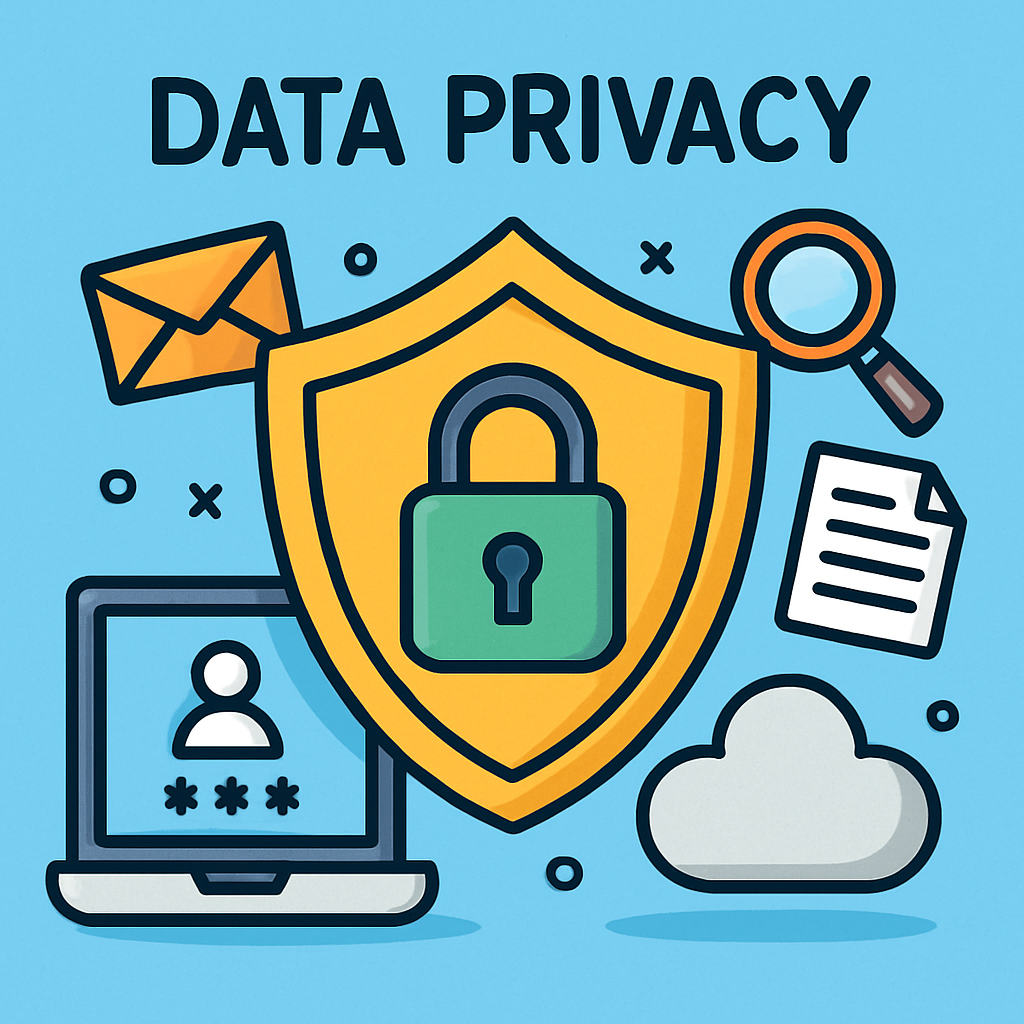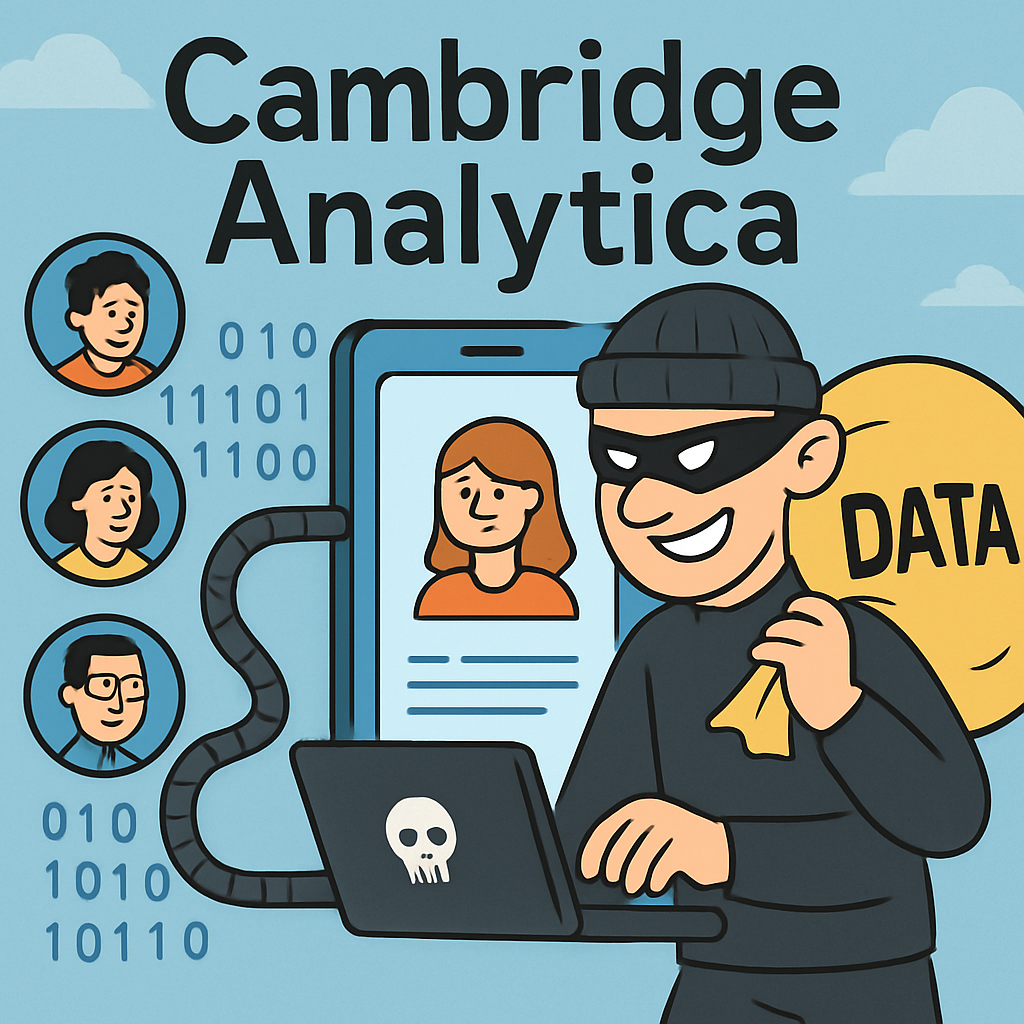 In our increasingly digital world, where we share so much of our lives online through social media, games, and apps, it's essential to understand data privacy. Data privacy means having control over your personal information – like your name, location, photos, and even your opinions – and deciding who can access it and how it's used. This protects you from risks such as unwanted attention, identity theft, or companies using your data without permission. As a young person navigating the online space, learning about data privacy empowers you to make safer choices and stay in control of your digital footprint.
In our increasingly digital world, where we share so much of our lives online through social media, games, and apps, it's essential to understand data privacy. Data privacy means having control over your personal information – like your name, location, photos, and even your opinions – and deciding who can access it and how it's used. This protects you from risks such as unwanted attention, identity theft, or companies using your data without permission. As a young person navigating the online space, learning about data privacy empowers you to make safer choices and stay in control of your digital footprint.
Before we explore more about data privacy, we'll start with a reflective exercise. This will help you think about your own online behaviours and connect personally with why privacy matters.
In your notebook or a digital document, follow these steps to complete the activity:
For guidance, here are some examples:
 Introduction to Data Privacy
Introduction to Data PrivacyHaving reflected upon the personal information you have shared online in the previous step, it is now time to develop a clear and comprehensive understanding of the concept of data privacy. This foundational knowledge will enable you to make informed decisions about your online activities.
Data privacy is defined as an individual's fundamental right to control the collection, utilisation, and dissemination of their personal information, especially in digital environments. This right ensures that your data is protected from misuse or unauthorised access, allowing you to maintain autonomy over your personal details.
To explain further, data privacy involves several key elements:
Personal information protected under data privacy includes items such as your full name, date of birth, home address, email address, photographs, location data, browsing history, and even your preferences or opinions expressed online. For instance, when you sign up for a social media account, data privacy principles require the platform to obtain your permission before using your details for targeted marketing or sharing them with other companies. This protection is vital to prevent risks like identity theft, cyberbullying, or unauthorised surveillance, which could compromise your safety and well-being.
In essence, data privacy empowers you to navigate the digital world with confidence, knowing that you have the authority to safeguard your information. It promotes a balance between enjoying online services and maintaining personal security.
 Exploring Methods of Data Collection
Exploring Methods of Data Collection
In the digital landscape, websites and applications frequently gather extensive data about users, often in subtle ways that may go unnoticed. Understanding these methods is crucial for recognising potential privacy implications. This step involves a brainstorming exercise to identify and analyse how data is collected.
To begin, reflect on common techniques employed by online platforms. For instance, data collection can occur through tracking your geographical location via your device's GPS, utilising cookies to monitor your browsing patterns, recording interactions such as likes and comments on social media, logging purchase histories in e-commerce sites, or capturing audio inputs from voice-activated assistants.
Follow these steps to complete the brainstorming exercise:
If you need inspiration, click the button below to reveal some examples.
 Exploring a Real-World Example of Data Privacy Risks
Exploring a Real-World Example of Data Privacy RisksIn this step, we will examine a significant real-world incident to understand the potential dangers associated with inadequate data privacy practices. By analysing this case, you will gain insights into how personal information can be mishandled and the broader implications for individuals and society.
In 2018, a major data privacy scandal involving the social media platform Facebook and a company named Cambridge Analytica came to light. Cambridge Analytica, a political consulting firm, gained access to the personal data of approximately 87 million Facebook users without their explicit knowledge or full consent. This data was collected through a seemingly innocent personality quiz app on Facebook, which not only gathered information from users who took the quiz but also from their friends' profiles.
The collected data included details such as users' likes, shares, friend connections, and even private messages in some cases. Cambridge Analytica used this information to build detailed psychological profiles of individuals. These profiles were then employed to create highly targeted political advertisements aimed at influencing voter behaviour during elections, including the 2016 US presidential election and the UK's Brexit referendum.
Many affected users were unaware that their data had been harvested and shared, leading to widespread privacy violations. The scandal sparked global outrage, resulted in investigations by governments, and led to significant fines for Facebook. It highlighted how personal data could be exploited for manipulative purposes, eroding trust in online platforms.
To deepen your understanding, reflect on this case study by answering the following questions in your notebook or a digital document. Provide your responses in full sentences.
 Identifying Red Flag Scenarios in Data Sharing
Identifying Red Flag Scenarios in Data SharingIn the digital world, not all forms of sharing personal information are safe. It is important to develop the skill of recognising potential risks associated with sharing data online. This ability helps you protect your privacy and avoid situations where your personal details could be misused. In this step, you will practise identifying 'red flags' by evaluating a series of scenarios. You will categorise each one as either 'Safe Sharing' or 'Risky Sharing'. For those you identify as risky, you will suggest a safer alternative action.
Remember, a 'red flag' is any action that could potentially expose your identity, location, or other sensitive information to unauthorised individuals or lead to privacy breaches. By spotting these, you can make more informed decisions about what to share online.
Follow these steps in your notebook or a digital document:
Here are the scenarios:
Example: Scenario 1 – Risky Sharing; Safer action: Use a username or pseudonym instead of your real name to maintain anonymity.
Once you have completed the task, you can check your answers against suggested responses by clicking the button below.